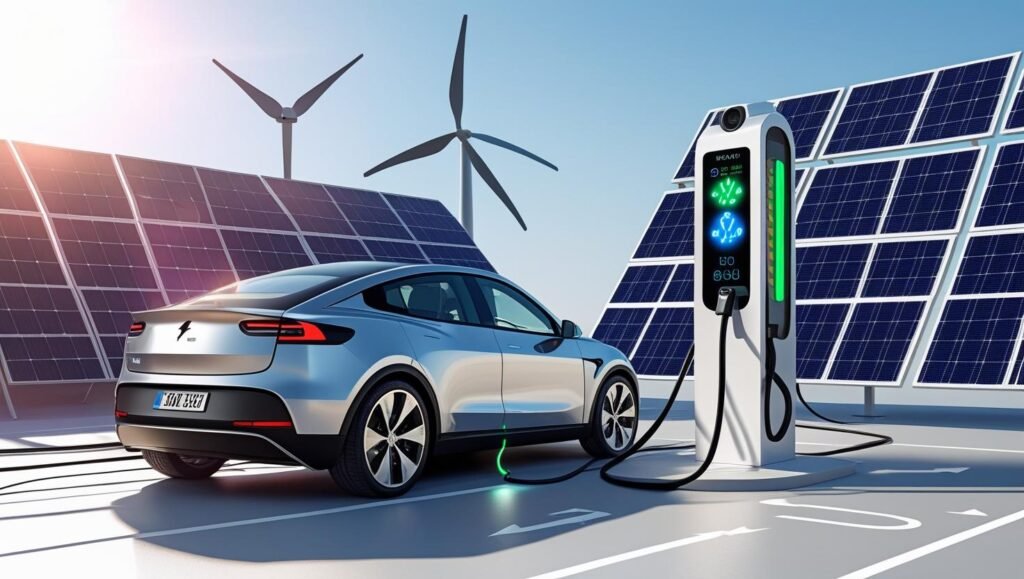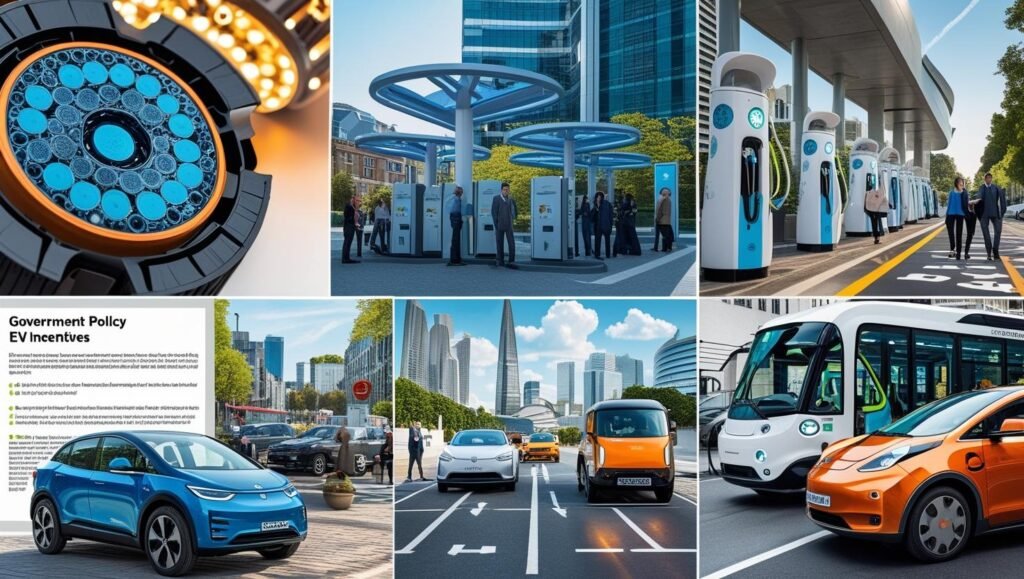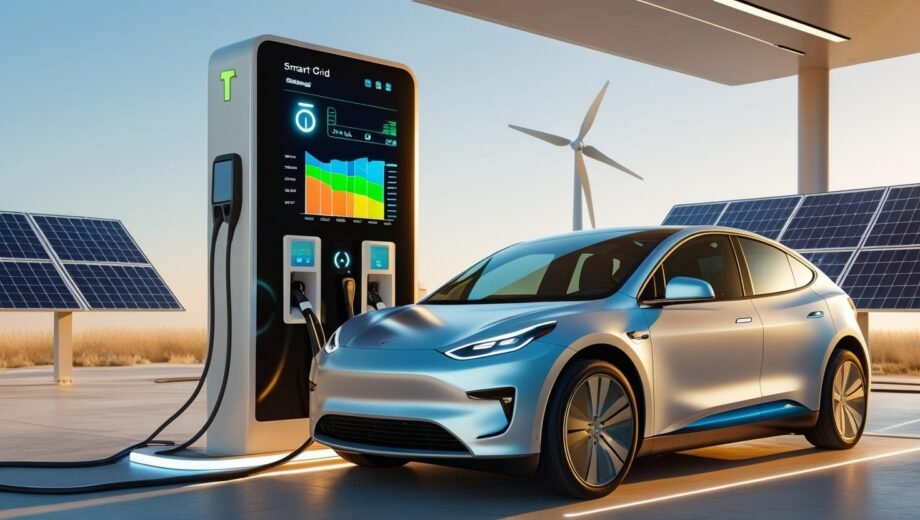The roar of the internal combustion engine is slowly being replaced by the near-silent hum of electric vehicles (EVs). This transition isn't just about cleaner transportation; it's a fundamental pillar of the broader green tech revolution. The future of electric vehicles in green tech is inextricably linked to advancements in renewable energy, smart grids, and sustainable battery technology. As we delve deeper into 2025, the trajectory of clean, electric vehicles points towards a transformative future, especially here in Peshawar, Khyber Pakhtunkhwa, Pakistan, and across the globe.
The Electrification Revolution: Beyond Tailpipe Emissions
The primary driver behind the shift to electric vehicles is the urgent need to reduce greenhouse gas emissions from the transportation sector, a significant contributor to climate change. EVs offer a direct solution to eliminate tailpipe emissions, leading to cleaner air in urban centers like Peshawar, where air quality can be a concern. However, the “greenness” of an EV extends far beyond its lack of exhaust fumes. It's intrinsically connected to the source of the electricity powering it. RIFS Potsdam – Environmental Impacts of Carbon Capture Technologies
- Synergy with Renewable Energy: The true potential of EVs is unlocked when they are charged using renewable energy sources like solar, wind, and hydro power. As Pakistan invests further in clean energy infrastructure, particularly in regions like Khyber Pakhtunkhwa with its potential for hydropower, the environmental benefits of EVs will become even more pronounced. The ability to power transportation with domestically generated clean electricity also reduces reliance on imported fossil fuels, bolstering energy security.
- Smart Grid Integration: The future of electric vehicles envisions them as integral components of smart grids. Vehicle-to-grid (V2G) technology, while still in its early stages of widespread adoption, holds immense promise. EVs could potentially feed energy back into the grid during peak demand, acting as mobile energy storage units, further stabilizing the electricity supply and maximizing the utilization of intermittent renewable energy sources. This bidirectional energy flow can create a more resilient and efficient energy ecosystem.

Key Trends Shaping the Future of Electric Vehicles
Several key trends are shaping the trajectory of EVs in the green tech landscape:
- Advancements in Battery Technology: Ongoing research and development are leading to batteries with higher energy density (longer range), faster charging times, improved safety, and lower costs. Innovations in solid-state batteries, for instance, promise significant breakthroughs in these areas. This is crucial for overcoming range anxiety, a key barrier to EV adoption, both globally and potentially in regions like Khyber Pakhtunkhwa where long journeys might be common.
- Expansion of Charging Infrastructure: A robust and accessible charging infrastructure is essential for widespread EV adoption. This includes public charging stations in cities like Peshawar, along highways connecting different regions of Pakistan, and the promotion of home and workplace charging solutions. Governments and private companies are increasingly investing in building out this infrastructure.
- Policy Support and Incentives: Government policies, such as tax credits, subsidies, and mandates for electric vehicle adoption, play a crucial role in accelerating the transition. Pakistan's own policies and incentives will be critical in shaping the pace of EV adoption within the country.
- Diversification of Vehicle Types: The EV revolution is no longer limited to passenger cars. Electric buses, trucks, motorcycles, and even rickshaws are becoming increasingly available, addressing transportation needs across various sectors and potentially revolutionizing urban mobility in cities like Peshawar.
- Circular Economy for Batteries: As the number of EVs on the road grows, so will the need for sustainable battery management. Developing robust systems for battery recycling, repurposing (e.g., for stationary energy storage), and remanufacturing is crucial to minimize the environmental impact of EV batteries and create a circular economy for these valuable resources.

The Role of Key Players: From Tesla to Global Automakers
Top electric vehicle companies like Tesla have been instrumental in driving innovation and popularizing EVs globally. Their advancements in battery technology, vehicle design, and charging infrastructure have set the benchmark for the industry. However, traditional automakers are also heavily investing in electrification, bringing a wider range of models and price points to the market. Here in Pakistan, the entry of both international and local players in the EV market will be crucial for offering consumers more choices.
Germany electric vehicles represent a significant force in the global EV landscape, with major German manufacturers committing to ambitious electrification targets and investing heavily in research and development. Their expertise in automotive engineering and manufacturing will play a key role in shaping the future of electric vehicles worldwide.

Overcoming Challenges and Realizing the Green Potential
While the future of electric vehicles looks bright, several challenges need to be addressed to fully realize their green potential:
- Grid Modernization: Upgrading electricity grids to handle the increased demand from EV charging and enabling smart grid functionalities is crucial.
- Sustainable Battery Sourcing: Ensuring ethical and environmentally responsible sourcing of battery materials is paramount.
- Charging Infrastructure Equity: Making charging infrastructure accessible to all communities, including those in less affluent areas and apartment dwellers, is essential for equitable EV adoption.
- Consumer Education and Awareness: Raising awareness about the benefits of EVs and addressing consumer concerns about range, charging, and cost is vital. C2ES – Carbon Capture
Conclusion: A Greener Road Ahead
The future of electric vehicles in green tech is deeply intertwined with a broader transition towards a sustainable energy system. By embracing clean, electric vehicles powered by renewables and integrated into smart grids, we can significantly reduce our reliance on fossil fuels, improve air quality, and mitigate climate change, both globally and here in Peshawar, Khyber Pakhtunkhwa. While challenges remain, the momentum behind the electrification revolution is undeniable, paving the way for a greener, cleaner, and more sustainable transportation future for all. Understanding electric vehicle technology explained is the first step towards embracing this transformative shift and contributing to a healthier planet.
Want to Explore More?
Read our latest piece: Green Technologies of the Future: Which Developments Will Save the World?.
Comment below: What’s your take on the environmental cost of green tech?
Tag us on social media using #GreenTechRealityCheck
nature.com+7thenevadaindependent.com+7lithiumharvest.com+7
Have questions or thoughts? Comment below and let us know what more you’d like to learn about green technology—we’d love to hear from you!






